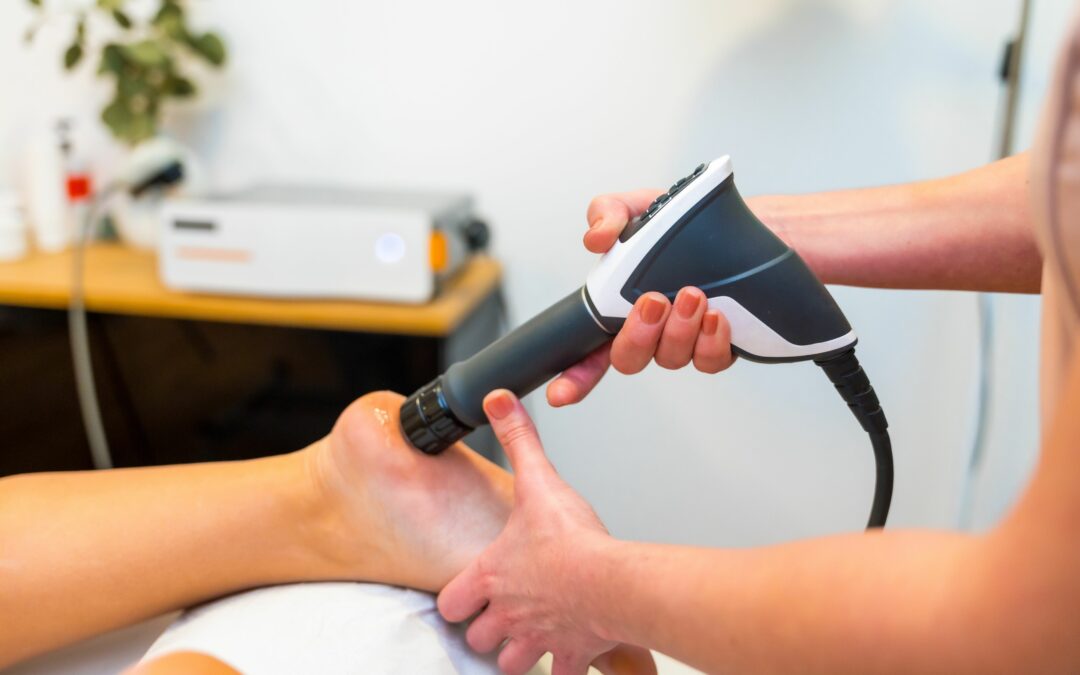At Kardinya Physiotherapy, we offer Shockwave Therapy as an effective, evidence-based treatment for a wide range of musculoskeletal conditions. It’s a non-invasive therapy proven to reduce pain, accelerate recovery, and improve function. Whether you’re struggling with chronic tendon issues or conditions like plantar fasciitis, Shockwave Therapy can be a powerful part of your recovery plan.
We’ve seen excellent results with this treatment, in line with growing research showing that Shockwave Therapy is both safe and clinically effective. Many patients report significant improvements after just one or two sessions.
However, while Shockwave Therapy effectively targets the site of pain or injury, it doesn’t always address the underlying causes — such as muscle imbalances, joint stiffness, or poor biomechanics. That’s why we combine it with a comprehensive physiotherapy plan to correct these issues and help prevent recurrence. This integrated approach often leads to better long-term outcomes than using Shockwave alone.
What is Shockwave Therapy?
Shockwave Therapy (also called extracorporeal shockwave therapy, radial shockwave therapy, or radial pressure wave therapy) uses high-energy acoustic waves to stimulate healing in injured tissues. A handheld probe delivers these waves directly to the affected area.
The sound waves stimulate your body’s natural repair mechanisms — increasing blood flow, breaking down scar tissue, and promoting tissue regeneration.
Your physiotherapist will adjust the intensity, frequency, and number of pulses based on clinical guidelines and your individual tolerance and condition.
Conditions We Treat with Shockwave Therapy
Shockwave Therapy is especially effective for chronic soft tissue injuries and tendinopathies. Research has shown that it often performs better than cortisone injections and other conservative treatments for many conditions.
Conditions with Strong Clinical Evidence:
- Plantar Fasciitis / Plantar Fasciopathy
- Achilles Tendinopathy (including insertional)
- Lateral Epicondylalgia (Tennis Elbow)
- Patellar Tendinopathy
- Calcific Supraspinatus Tendinopathy
- Gluteal Tendinopathy (Gluteus Medius/Minimus)
- Greater Trochanteric Pain Syndrome
Other Conditions That Respond Well:
- Rotator Cuff Tendinopathy
- Medial Epicondylalgia (Golfer’s Elbow)
- Adductor Tendinopathy
- Tibialis Posterior Tendinopathy
- Peroneal Tendinopathy
- Proximal Hamstring Tendinopathy
- Dupuytren’s Contracture
- Plantar Fibromas
Not sure if your condition is suitable? Just ask us — we’re happy to help.
Who Should Avoid Shockwave Therapy?
Shockwave Therapy is safe for most people, but it may not be appropriate if:
- You are pregnant
- You have a blood clotting disorder or thrombosis
- You’re taking blood-thinning medications
- You’ve had a steroid injection in the area within the last 6 weeks
- You have a pacemaker or other implanted device
- You have a tumour or cancerous tissue at the treatment site
- You have an infection, rash, or open wound at the treatment site
- Treatment is over air-filled organs (lungs, abdomen)
- Treatment would be over joint replacements or growth plates
Your physiotherapist will perform a full assessment to ensure this treatment is safe and appropriate for you.
How Does Shockwave Therapy Work?
Shockwave Therapy promotes healing in a number of ways:
- Stimulates blood flow and new blood vessel growth (angiogenesis)
- Triggers the release of growth factors and repair enzymes
- Encourages collagen production
- Aids tissue remodelling and healing
- Helps dissolve calcium deposits in tendons
- Relieves pain by releasing Substance-P (a pain-regulating neurotransmitter)
Does Shockwave Therapy Hurt?
Most patients describe the treatment as mildly uncomfortable but tolerable. On a scale from 0 to 10 (where 10 is the worst pain), we aim to keep it around a 4–5. The intensity can be adjusted in real time based on your comfort.
How Many Sessions Will I Need?
It varies depending on your condition and how long you’ve had it. On average, most people need 3 to 6 sessions for optimal results. Your physiotherapist will tailor a plan to your specific needs.
Is There Any Downtime?
No. You can usually resume normal activities straight after treatment. However, your physiotherapist may advise temporarily modifying certain exercises or loads depending on your injury and healing stage.
Are There Any Side Effects?
Shockwave Therapy is generally very well tolerated. Some patients may experience:
- Mild discomfort for a day or two
- Redness or slight bruising at the treatment site
- Temporary skin sensitivity
These effects are typically short-lived and resolve on their own.
Is Shockwave Therapy Covered by Health Insurance?
Yes — if your private health fund covers physiotherapy, there is no extra charge for Shockwave Therapy during your regular session.
Can I Exercise After Shockwave Therapy?
Light activity is usually fine, but this depends on your injury and stage of recovery. Your physio will guide you on what’s safe and appropriate after treatment.
Where Can I Get Shockwave Therapy Near Perth?
We provide Shockwave Therapy at our clinic in Kardinya, just 15 minutes from Perth CBD. Our experienced team integrates it with tailored physiotherapy programs for optimal recovery.
How Much Does Shockwave Therapy Cost?
There are no extra or hidden fees — Shockwave is included in the cost of your standard physiotherapy consultation.
Ready to Book?
Call us on (08) 9337 8530 or book online to schedule your session. Let’s get you back to moving pain-free.

